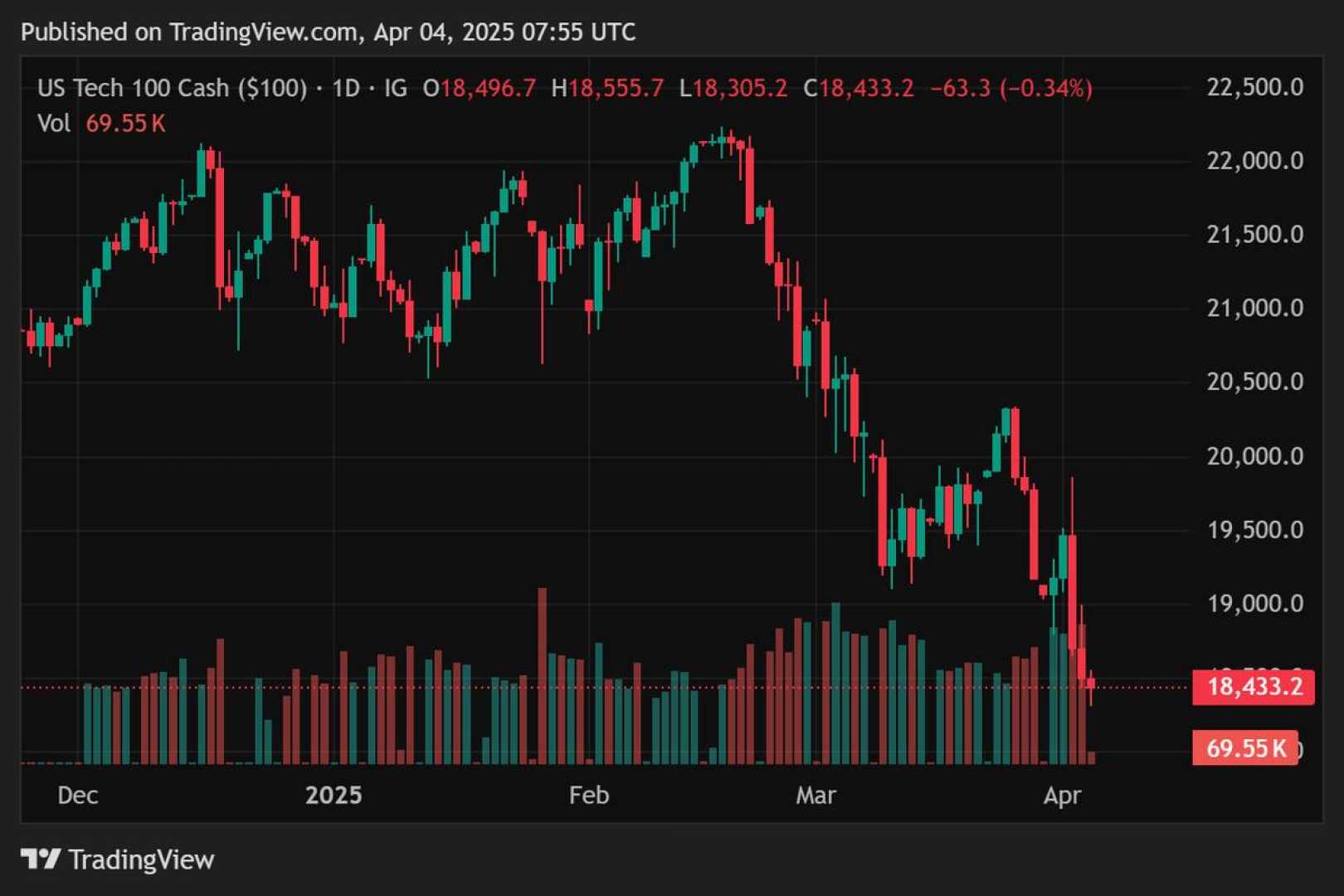Business
Investors Weigh Risks as Nasdaq Composite Faces Correction

NEW YORK, NY — As of April 4, 2025, the Nasdaq Composite Index is officially in correction territory, having fallen over 14% since its all-time high on December 16, 2024. The downturn comes as investors grapple with the uncertain economic landscape, prompting discussions on alternative investment strategies.
The most prominent tool available to investors is the Invesco QQQ Trust ETF, which tracks the Nasdaq-100 Index. This ETF comprises the 100 largest non-financial companies listed on the Nasdaq stock exchange. However, amid the market’s fluctuations, analysts are advocating for a less conventional approach through the Direxion Nasdaq-100 Equal Weighted Index Shares ETF.
The Direxion ETF, which weighs all companies equally, stands in contrast to the market cap-weighted Invesco QQQ ETF, where a few tech giants dominate the fund. For instance, companies such as Apple, Nvidia, and Microsoft constitute over 39% of the Invesco QQQ, raising concerns about investment concentration in a handful of firms.
“Investing in an equal-weight ETF can provide more balanced exposure to the market, minimizing the risks associated with fluctuations in a few dominant stocks,” said a financial analyst who specializes in market trends. “It allows investors to mitigate losses during downturns and capture more gradual growth during upturns.”
The top 10 holdings in the Direxion fund include Apple, Nvidia, Microsoft, and Alphabet, but each is weighted at just 1% compared to the significant percentages in traditional ETFs. This structure strives to level the playing field among smaller tech companies versus larger incumbents.
Data shows that the Direxion ETF has outperformed its market cap-weighted peers during past market corrections. For example, in 2022, the tech sector faced one of its worst years, and while the Nasdaq-100 was down 33%, the equal-weight ETF’s decline was limited to 25%.
Despite these advantages, potential investors should also be aware of the Direxion ETF’s higher expense ratio of 0.35%, equating to $3.50 per $1,000 invested annually. However, its historical performance shows a long-term average gain of around 12% since its establishment in March 2012, which some investors find justifiable.
Market volatility remains a significant concern. With several large-scale projects reportedly being scaled back, including some by Microsoft, market observers continue to watch for signs of recovery. In the meantime, technology remains a leading sector by market capitalization in the S&P 500, comprising a large portion of market movers.
“If the aim is to invest robustly in the entire Nasdaq, it’s critical to diversify beyond just a few companies,” emphasized an investment advisor. “An equal-weight investment approach could safeguard your portfolio in unpredictable times.”
As of early April, stocks like Apple and Microsoft remain key drivers in tech, but the potential for loss amplifies when investors commit heavily to a few key players. Diversifying through ETFs, particularly in this challenging market, might provide an avenue for navigating uncertainty effectively.
For those actively considering their next steps amidst ongoing market volatility, the insights from industry analysts are clear: balanced approaches often yield more stable, favorable outcomes during economic corrections.












